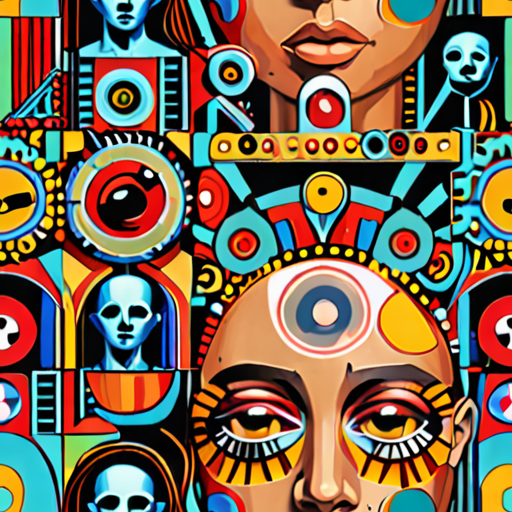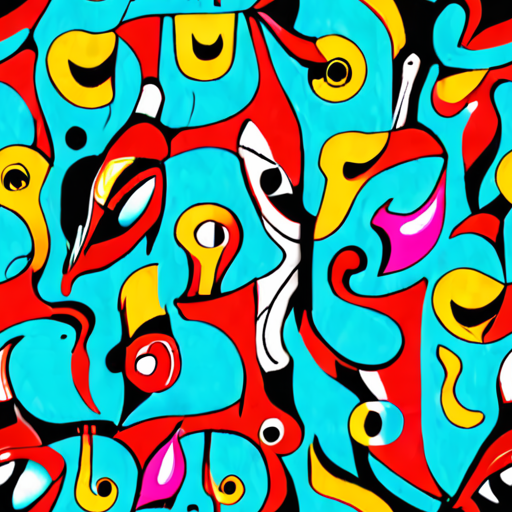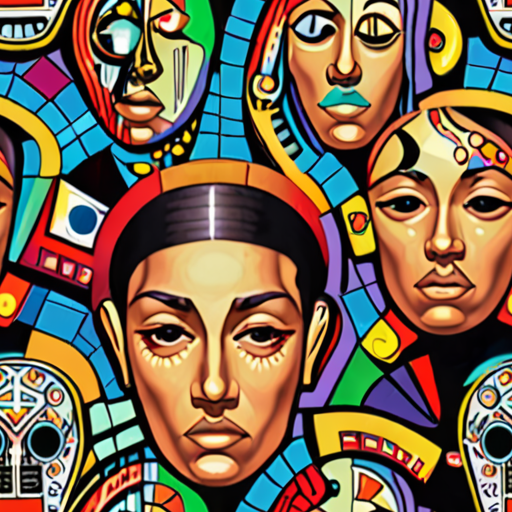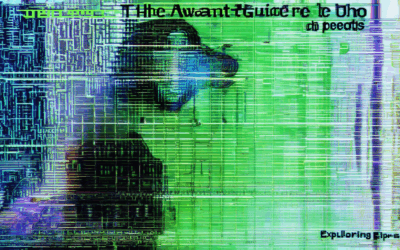The world of music is a vast canvas, and within it lies a vibrant, often overlooked scene known as underground music. This unique realm is defined by its authenticity, creativity, and the unfiltered expression of artists who choose to forge their own path rather than conform to mainstream standards. Whether it’s the pulsating beats of underground EDM, the raw storytelling of underground rap, or the eclectic mix of indie rock and other subgenres, there’s a wealth of sound that defies categorization and challenges traditional norms.

What is Underground Music Now?
Underground music refers to independent, non-mainstream musical acts that operate outside the traditional commercial recording industry. These artists often experiment with unique styles, explore untapped sonic territories, and challenge conventional norms in music production and composition.
Definition and Scope
Today, underground music encompasses a diverse array of genres, including but not limited to:
- Lo-fi beats
- Vaporwave
- Experimental music
- Grime
- Post-punk
- Hyperpop
- Chillwave
- Dark ambient
- Balearic beats
The Evolution of Underground Music
While the concept of underground music has roots in historical movements like psychedelia and punk rock, it has grown significantly in the digital age. Platforms like Bandcamp, SoundCloud, and YouTube have democratized access to music creation and distribution, enabling artists to reach audiences without relying on traditional record labels.
Key Platforms and Communities
Independent music fans and creators increasingly turn to online communities and platforms to discover and share underground sounds. Websites like Abstract Hip Hop serve as hubs for niche genres, offering in-depth coverage of emerging artists and trends. These platforms often feature detailed articles, interviews, and reviews, making them invaluable resources for music enthusiasts.
Competing Platforms
While Abstract Hip Hop remains a prominent player in the underground music space, there are other notable platforms and communities worth mentioning, such as:
- Bandcamp – Known for its support of independent artists across various genres.
- SoundCloud – A popular platform for streaming and discovering new music.
- YouTube – Home to numerous channels dedicated to underground and niche music genres.
Conclusion
Underground music continues to thrive as a vibrant and innovative force in the global music landscape. With the rise of digital tools and platforms, artists have greater freedom to express themselves and connect with audiences worldwide. Whether through lo-fi beats or experimental soundscapes, underground music remains a testament to the power of creativity and authenticity.
What is underground EDM music?
Underground EDM refers to a subgenre of electronic dance music that prioritizes experimentation, innovation, and authenticity over mainstream popularity. Unlike mainstream EDM, which often blends with popular music trends and is produced by large labels, underground EDM is typically created by independent artists and smaller labels. This scene thrives on pushing boundaries, exploring unique sounds, and fostering a strong sense of community among its followers.
Distinguishing Features of Underground EDM
- Experimental Nature: Underground EDM artists often venture into uncharted territory, blending genres like melodic techno, minimalistic house, and glitchy basslines to create something entirely new.
- DIY Spirit: Many underground EDM producers self-release their work or collaborate with small, independent labels, embracing a do-it-yourself ethos.
- Focus on Creativity: The primary goal for many underground artists is to express their unique vision rather than chasing commercial success.
Key Artists and Influencers
Some notable names associated with the underground EDM scene include Robert Hood, Marcel Dettmann, and Ben Klock, who are known for their innovative approaches and deep-rooted connection to the genre’s roots.
The Role of Communities
Underground EDM has a vibrant community element, with many fans and artists gathering at intimate events and gatherings. Platforms like Resident Advisor and labels like RA Records play crucial roles in promoting and supporting the scene.
Conclusion
Underground EDM stands out for its unwavering commitment to creativity and its ability to push the boundaries of electronic music. Whether through its diverse subgenres or its tight-knit community, this scene continues to thrive as a beacon of authenticity and exploration in the world of EDM.

What Makes Music Underground?
Music is often categorized as underground due to several distinct characteristics that set it apart from mainstream music. Here are the key factors that define underground music:
- Lack of Mainstream Exposure : Underground music typically doesn’t receive airplay on major radio stations or appear on charts. Artists may distribute their music independently or through niche platforms.
- DIY Ethos : Many underground artists take a do-it-yourself approach, producing music without relying on traditional record labels. This includes self-releasing albums, EPs, and singles through platforms like Bandcamp or SoundCloud.
- Authenticity and Originality : Underground music often prioritizes authenticity and uniqueness. Artists experiment with lesser-known genres, styles, or sounds that may not appeal to a broad audience.
- Niche Appeal : Underground music tends to resonate with specific audiences or communities. Its popularity is often localized, catering to fans who seek out unique or obscure sounds.
- Financial Independence : Many underground artists rely on alternative income sources, such as crowdfunding, merchandise sales, or performing at smaller venues, rather than relying on record label advances or royalties.
- Community-Oriented : Underground scenes often thrive on strong communal ties. Artists and fans frequently collaborate, promote each other, and attend events together, fostering a tight-knit culture.
- Innovation and Exploration : Underground music is known for pushing boundaries and experimenting with new sounds. This often leads to the development of subgenres and styles that challenge conventional norms.
Abstract Hip Hop, for instance, represents an underground scene that embraces avant-garde production techniques, spoken word, and electronic influences. Platforms like Competitors often highlight such artists and their unique contributions to the music landscape.

What is Underground Rap Music?
Underground rap music refers to a genre of hip-hop that operates independently of mainstream recognition, often focusing on authenticity and originality. This style typically avoids commercialization, embracing a DIY ethos and fostering a tight-knit community of artists who prioritize substance over popularity.### Origins and EvolutionUnderground rap traces its roots to the late 1970s in New York City, emerging alongside block parties and street-corner rhyming sessions. Pioneered by artists like DJ Kool Herc and the Bronx-based crews, it quickly developed a raw, gritty sound characterized by bold storytelling and social commentary.### Key Characteristics1. **Authenticity**: Underground rap often prioritizes genuine storytelling and personal experiences over polished production.2. **Lyrical Depth**: Artists frequently delve into complex themes, including social issues, personal struggles, and cultural critiques.3. **Beats and Production**: While production varies widely, many underground tracks feature lo-fi beats, minimal instrumentation, or experimental sounds.4. **Cultural Significance**: This genre has historically served as a platform for marginalized voices, reflecting the struggles and triumphs of urban life.### Notable ArtistsWhile mainstream success may elude many underground artists, several have gained critical acclaim and cult followings. Names like Nas, Tupac Shakur, and The Notorious B.I.G. have often been associated with the genre, though their prominence sometimes blurs the line between underground and mainstream.### Distribution and ReachUnderground rap typically circulates through mixtapes, bootleg CDs, and streaming platforms, bypassing traditional record labels. This distribution method allows artists to retain creative control and connect directly with fans.### Impact and InfluenceUnderground rap has had a profound impact on hip-hop culture, inspiring movements like conscious rap and social activism. Its emphasis on storytelling and authenticity has influenced various subgenres, from boom bap to experimental hip-hop.### Subgenres and VariationsWithin the underground scene, several subgenres have emerged, including:- **Conscious Rap**: Focused on social commentary and intellectual lyrics.- **Boom Bap**: Emphasizing old-school beats and precise rhyme schemes.- **Grime**: A UK-based variant characterized by dark, gritty themes and minimalist production.### ConclusionUnderground rap remains a vital force in hip-hop, preserving the genre’s roots while pushing boundaries. Its commitment to authenticity and innovation continues to resonate with fans worldwide, shaping the evolution of music and culture.
The Father of Underground Rap
DJ Kool Herc is widely regarded as the father of underground rap. Born in Jamaica, he moved to the Bronx, New York City, where he became a pivotal figure in the emergence of hip-hop culture. In 1973, DJ Kool Herc hosted the historic Back to School Jam at 1520 Sedgwick Avenue, a landmark event that marked the beginning of what would become known as hip-hop. At this gathering, he introduced the concept of emceeing, setting a precedent for future rappers by crafting intricate stories through his rhymes.Before DJ Kool Herc, there was no established role for someone who rapped. He essentially created the position of the MC, laying the foundation for the genre. His innovative approach to storytelling and his ability to engage the crowd at events like The Loft further cemented his status as a trailblazer in the underground rap scene. His influence extended beyond just spinning records; he also mentored emerging artists and contributed to the growth of hip-hop culture globally.Thus, DJ Kool Herc’s legacy as the father of underground rap is rooted in his groundbreaking contributions during a transformative era for music and culture.
Is Eminem an underground rapper?
Eminem is widely recognized as one of the most influential rappers in history, but his journey began in the underground rap scene. Born Marshall Mathers in Detroit, Michigan, Eminem developed his skills in the city’s thriving underground hip-hop community. This subculture emphasized authenticity, lyrical prowess, and a DIY approach to music, far removed from mainstream attention.The term “underground rapper” typically refers to artists who operate outside mainstream media’s spotlight, often focusing on independent releases and a loyal fanbase. While Eminem achieved massive commercial success and global fame, his early career was rooted in the Detroit underground. His debut album, *The Slim Shady LP*, was independently released in 1999 and quickly sold over 1 million copies, catapulting him into the mainstream.Despite his mainstream success, Eminem’s connection to the underground remains significant. Many fans and critics acknowledge his humble beginnings and his ability to blend raw, personal storytelling with technical excellence. Over the years, he has collaborated with unsigned artists and maintained ties to the scene that launched his career.Eminem’s influence extends beyond his own success. He has inspired countless artists, from battle rappers to mainstream stars, and his work continues to shape the genre. While he is no longer considered an underground artist, his roots and dedication to authenticity resonate with fans of both underground and mainstream hip-hop.
Competitors and Context
The underground rap scene is rich with talent, including artists like J. Cole, Kendrick Lamar, and Big L, who have also achieved mainstream success while maintaining their underground credibility. Eminem’s story highlights the possibility of rising from the underground to the top of the charts, though it remains rare.
Conclusion
Eminem’s journey from the Detroit underground to global stardom is a testament to the power of authenticity and skill in hip-hop. While he has evolved over the years, his impact on the genre remains undeniable, bridging the gap between underground and mainstream success.




0 Comments